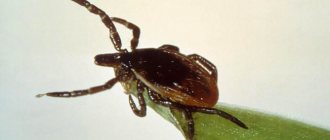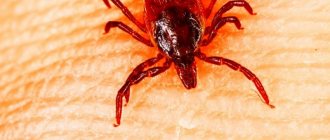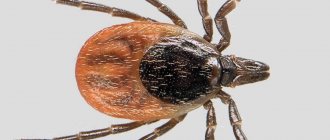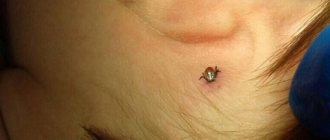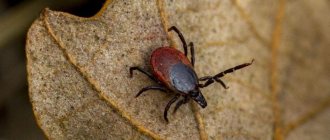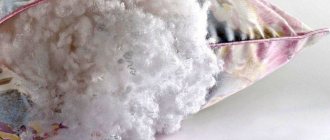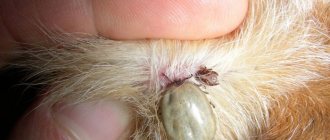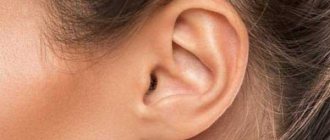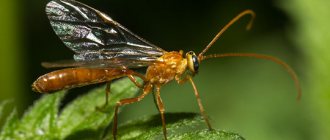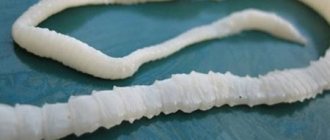Insects similar to ticks: dangerous or not?
In our environment, there are species of insects that are identical in appearance to mites. These parasites plague humans and bring a lot of inconvenience to our normal way of life. The classic tick is considered a carrier of dangerous diseases. If you have been bitten by a tick, it would be advisable to contact a medical facility. Experts send the tick itself to a laboratory for testing. Insects that look similar to ticks can be absolutely safe for humans. In order not to panic after being bitten, it is better to have an idea of the existing types of such insects.
How do red mites reproduce?
Like all mites, red mites are oviparous insects.
- The active breeding season can occur between March and July, the exact dates depending on local weather and general climatic conditions of the current season.
- Repeated oviposition can occur in the fall, but in the middle zone this does not happen every year.
- If the laying was done in the fall, but the larvae did not have time to complete their development, they can overwinter in the soil under the cover of snow and continue growing in the spring, after the sun warms the ground again.
- Each clutch can contain from several hundred to several thousand eggs.
- The incubation period of eggs takes from 1 to 2 months.
- After hatching, the larvae begin to parasitize insects; the stage lasts 1–2 weeks.
- After turning into an adult insect, red mites repeat the entire reproduction cycle again.
Larvae are the most voracious stage of parasite development.
Appearance and classification
Ticks are the oldest invertebrates with a primitive structure. Their miniature body size helps them spread and survive everywhere. Their body is divided into two parts, the border is located closer to the front. Four pairs of legs consist of several segments, the final one is a tarsus, armed with claws and suckers.
The first pair of appendages, chelicerae or jaws, are characteristic of all arachnids. They look like pincers and are used for piercing and cutting. The oral apparatus also includes pedipalps, limbs located on the side of the chelicerae. These processes grow together at the base and, together with other parts, form a movable head. There are some differences in the structure of the oral organ, depending on the type of nutrition. In saprophages that eat dead remains, it is gnawing, while in predators and parasites it is piercing-sucking.
In representatives of different species, the number of eyes varies from 0 to 5. The body of arthropods can be soft, leathery or covered with a hard shell.
Classification
Most species of mites are predators and saprophages. They live independently and do not need to parasitize other individuals to develop. Scientists divide the Acari subclass into three superorders:
- Harvester ticks (Opilioacaridae) are large terrestrial individuals measuring 1-3 mm in size. There are 25 known species inhabiting the tropics and subtropics. Their head and thoracic region merge into the cephalothorax, delimited from the abdomen. The oral apparatus consists of chelicerae, pedipalps and upper lip. On the back there are three pairs of eyes. Their long legs make them look like harvestmen. Representatives of the family live in the forest, under stones, and in the soil. They feed on solid food, including small arthropods, plant pollen and fungal spores.
- Parasitiformes are a superorder with 12.5 species. This group includes parasites of vertebrates, as well as predators and saprotrophs (individuals that destroy the remains of living beings). Among the most dangerous representatives of the superorder are ixodid and argasid ticks.
- Acarimorphic mites (Acariformes) are the largest group, which includes more than 30 thousand species. Individuals of the family are characterized by the addition of segments throughout life. About half of the group consists of sarcoptiform mites, which parasitize vertebrate animals. They feed on feathers, skin, and hair. Thrombidyphoid mites (almost 22 thousand species) include plant pests and carriers of infectious diseases.
Variety of tick species
What are the symptoms and signs of a tick bite in a person?
Tick larva
The body shell of the tick larva is not yet fully formed - bristles may be absent, and in armored species the body shell is translucent and thin. The larvae are especially active in the warm season; they choose small terrestrial animals as hosts - mice, hedgehogs, lizards, since it is difficult for these little parasites to rise to a significant height.
According to American sources, the question of whether a tick larva is dangerous for humans can be answered positively: the bite of a tick larva is dangerous if we are talking about the larva of an encephalitis tick. Thus, the tick larva is a carrier of diseases and is dangerous to humans!
According to the US Department of Health and Human Services, 20% of nymphs carry diseases such as Lyme disease, so even though they are not yet fully formed, they are already dangerous. Thus, the tick nymph is dangerous to humans, and the nymph’s bite can transmit various diseases (encephalitis, Lyme disease and others).
Tick nymph on the right, black-legged tick on the left
- increase in temperature to 37-38 degrees, redness of the bite site, drowsiness and weakness, itching, chills, aching joints, photophobia, Quincke's edema (swelling of the eyelids, lips and other parts of the body), enlarged lymph nodes.
- headache, nausea and vomiting, difficulty breathing, and hallucinations may also be present.
What is the danger?
This little bug is capable of causing enormous harm. It is very dangerous for grain crops, as it can reduce yields several times. In addition, it is dangerous because its waste products contain pathogenic microorganisms, including E. coli. It eats grains, cereals, flour, a variety of dried fruits and will not pass by meat waste.
Where the flour mite has visited, food becomes unfit for consumption, since there is a high risk of infection. The mildest consequences include poisoning and allergic reactions. But unfortunately, there is a possibility of infection with scabies, Lyme disease, and urticaria. In addition, diseases of the respiratory tract and genitourinary system may occur. It is also dangerous for animals; if they taste contaminated food, they will experience severe diarrhea, weakening of the body, decreased appetite, or a complete refusal to eat it.
Why do lice appear?
The source of infection is usually people who are already sick. The situation is aggravated by unfavorable social factors - in the event of war, a long stay near people without a permanent place of residence, who do not maintain cleanliness and do not care about their health.
But you can bring a louse of this species from a completely safe place! This is where the cunning of lice manifests itself - they do not care whether a person takes care of himself. But linen lice still comes to visit untidy people more often.
Infection is quite possible through contact with someone else's bed, hygiene items such as a towel or any clothing.
You can get parasites:
- at the hotel;
- on trains (including electric trains);
- in a taxi;
- when visiting a hairdresser;
- while trying on clothes in a store or market;
- in a tourist or children's camp;
- and even visiting.
In fact, not a single person leading a social lifestyle is safe from uninvited guests. Mass gatherings of people and places of temporary residence pose a certain risk. This is where insects most easily and quickly get on clothes.
Signs of a pest
It is almost impossible to detect the flour mite as soon as it appears, and this is due to the fact that it is very small in size and is well camouflaged in food supplies. As you can understand from the name of the mite, the first place to look for it is in flour
In addition, there are several signs that will help identify the parasite. The first thing you should pay attention to is the smell. Where they live, a rather specific smell appears, it resembles the aroma of mint
If you notice that, for example, flour or cereal has an unnatural odor for the product, then most likely they are infected with mites. Products also change their taste characteristics and a sweetish taste appears. In addition to smell and taste, we can identify them visually. It is necessary to take a good look at flour products and cereals. If there is a bug, but something similar to a coating in the form of small grains of sand appears on them. To identify the parasite in flour, you can perform the following steps. Pour a little flour onto the table, spread it over the surface in a thin layer, leave for 20 minutes. If there are noticeable small bumps on the surface of the flour, it means there is a mite in it. Another way we can detect flour mites is with tape. We take double-sided tape and stick it on the doors of the cabinet where food supplies are stored. After a few days, we take a magnifying glass and look at the tape; if this parasite lives in your home, you will see it (photos will help you recognize it).
Tick larva
Red mite larvae do not exceed 0.5 mm in length. The color of the body is red-orange, the surface structure is folded. On the back there is a shield with 4-5 setae, as well as a pair of hearing organs, represented by trichobothrium hairs.
The larvae move with the help of three pairs of legs.
The organs of vision, the eyes, are located on the sides of the scutum, there are two pairs of them.
On the front side of the body there is a gnawing type mouthpart (hypostome). There are also 1 and 2 pairs of forelimbs - chelicerae and pedipalps, which are also part of the gnawing apparatus.
When the larva is hungry, it has a flat body. At the moment of saturation, the body swells approximately 5 times.
Tick larvae consume the blood of birds, mammals and reptiles as food.
Karakurt
If a tick can turn out to be both a carrier of a dangerous disease and a partly harmless blood-sucking insect, then the karakurt, or rather the female of this spider, has one of the most powerful poisons known to mankind. She weaves her web in the arid forests and meadows of Crimea, Voronezh, Rostov, Saratov, Volgograd regions and even in the southern regions of the Moscow region. The insect has a small black head and a large, round body with bright red spots, as well as long thin legs and reaches sizes of 1-2.5 cm. The female karakurt spider can attack an animal or person if it feels a threat to its life. For example, they try to brush it off the clothes where it got caught because they tore its web, or they intend to crush it. Then she bites through the skin of the offender with her chelicerae, and injects the existing poison to a depth of 0.5 mm. After 10-15 minutes, the person affected by karakurt experiences muscle breakdown, chills, as if a virus infection has begun, the heart rate increases, shortness of breath, dizziness, and numbness of the limbs appear. Then the person experiences incredible weakness, his arms and legs stop working, and he starts vomiting. At the last stage, which can develop within a few hours, clouding of consciousness occurs, loss of the ability to perceive reality and recognize loved ones.
Life cycle
The red beetle velvet mite goes through 7 stages of development:
In our area, 2 generations of red beetles appear in 1 year. In the natural environment, representatives of all stages are present simultaneously. Larvae, second generation nymphs, and adults are actively developing. At other stages, the tick goes into a dormant state.
The habitat of the anestis mite is soil. Only the larvae leave its boundaries. Fertilization of females occurs underground; after a few weeks, she lays eggs in small piles. The period of development of red beetle prelarvae depends on temperature conditions and humidity. On average 1 week. They are blood-sucking parasites that are not particularly selective in their choice of host.
Life cycle of the red mite
Small red ticks gather on the surface of the soil, waiting for their prey. Insects, spiders, and animals can suffer from an invasion of parasites. Lizards, frogs, rats, and mice often become victims. Red calf cubs feed on tissue fluid and blood. The period of stay on the body ranges from 3 days to 1 month. At the end of the period, the parasite falls to the ground and buries itself in the soil. There it goes through all stages of development and turns into an imago.
The second generation nymph and adult are predators that feed on small invertebrates and their larvae.
The red mite uses the victim's body to feed and move over long distances. This explains the wide range of natural habitats of red beetles. Arachnids adapt well to unfavorable conditions and are capable of falling into suspended animation for several months, but a hungry larva does not survive the winter.
How long do they live?
To determine exactly how long a tick lives in nature, it is worth taking into account many nuances. The lifespan of insects of this species depends on many factors - on the variety, on air temperature, humidity, and the availability of food.
In favorable conditions, the pest can live shorter, but is much more productive.
Dust mites can live between 65 and 80 days. Other species, for example, taiga representatives, can live up to 4 years. Under unfavorable conditions - extreme heat, dryness, the life expectancy of a tick can be reduced to 1 year.
It is worth knowing how long ticks live without food; without food they can not survive for long – from 1 month to 3 years. It all depends on the type and vitality of the insect.
How to get rid of false scorpions
If the number of false scorpions has increased, and noticeably, then measures must be taken to get rid of such a neighborhood. In this case, you just need to catch them, place them in some container and take them outside or to a park, or better yet, closer to a body of water.
In addition, in such cases, it is better to eliminate the factors that provoke the appearance of such insects in the home. For example:
Do some general cleaning to remove dust, accumulated debris and unnecessary items. Don’t forget about things in closets, chests of drawers, mezzanines, so you can take them out into the fresh air
The same needs to be done with paths and carpets, and check bed linen for the presence of parasites. Carry out wet cleaning using a soap solution or vinegar solution. Carry out high-quality cleaning of the bathroom with disinfection, removing cobwebs and dust, especially in hard-to-reach places. Particular attention should be paid to places where books, magazines, newspapers and other paper are stored. Dust harbors insects harmful to humans, such as dust mites and carpet beetles, which in turn attract false scorpions. Preventative cleaning of the premises should be carried out as often as possible to prevent dust accumulation. Regularly combat harmful insects that are included in the diet of false scorpions
If there is no food supply, then false scorpions are unlikely to be interested in such an apartment, since they do not feed on the remains of human food.
book false scorpio
Watch this video on YouTube
Favorite places to live
The more carpets, upholstered furniture and other textile decorations and interior items there are in the house, the more and faster dust will form in it. For example, carpets are a favorite habitat for dust mites. A huge amount of “provisions” always settles on them. The next photo shows dust mites that feel great among carpet textile fibers.
Separately, it is worth mentioning feather and down pillows, as well as mattresses. Scientists managed to have a hand here too, calculating that up to two million dust mites constantly live in an ordinary average double bed. And feather and down fillings, if there is a lack of food, can themselves become food for these microscopic creatures.
Household and other appliances deserve a special mention. Old monitors, stereos and DVD players are potential cities and breeding grounds for dust mites. There is always a lot of dust among the microcircuits, capacitors, resistors and other radio equipment, but if there is a lot of dust, and no one cleans it out for a long time, mites live in it especially freely.
Beetles and mites under a microscope
September 25, 2012
Meet the superbugs... the Velvet Mite, which can grow up to 2 centimeters in length, and the indestructible "water bear" that survives even in space. All these terrible creatures with multiple magnification under a microscope. There is only one living creature known to science that can survive in the depths of space.
This is a "water bear", officially known as a tardigrade. Despite being less than a millimeter in length and considered a passive life form that lives in bog moss, the tardigrade is considered nearly indestructible.
You can freeze it to absolute zero (-273 degrees Celsius) and heat it to 151 degrees Celsius - it will not die.
The “water bear” can survive for a decade without water and can withstand any type of pressure. Even in the high radioactive background of the vacuum of space, he can survive ten days or more without receiving much damage.
This is just one of the extremely small but unusual bugs that live in our gardens or even in our bodies.
500x magnification: The green swamps in the photo are tiny leaves of moss.
Would that scare you? Springtails are one of the most numerous microcreatures on the planet. About one hundred thousand of these creatures live in every cubic meter of salt.
Not so cute: The mosquito larva is magnified more than a thousand times to show us the intricate details of its young face.
Surprisingly large: Among beetles, the velvet mite can be considered quite large - it reaches two centimeters in length.
Just as disgusting as you'd expect: the larvae eat their way through the compost.
The moth caterpillar, native to southern and central Europe, is no friend to man. It causes skin irritation and asthma.
It could very well be the brother of the creature above, but it is a silkworm caterpillar.
The head louse is 2 millimeters long and lives in the hair on the head. Each female head louse lays 80-100 eggs and the life cycle from egg to adult is only three weeks.
The next time your cat itches, know who to blame: the cat flea is imprinted in its natural habitat - in the cat's fur.
Intelligence is almost visible on this “face”: but this is just the head of a larva - the offspring of a corpse fly.
The Rocky Mountain wood mite grows to gigantic size once it finds a human to parasitize.
Don't look, children! This is a tick that has swollen in size after drinking the blood of its mammalian host.
Sponsor of the publication: Audit Service company: change of passport data
Tags: ticks under a microscope water bear nature
Characteristics of false scorpions
The false scorpion is an unusual insect and cannot be confused with any other insect due to a number of characteristics. For example:
- The body shape resembles a tick.
- Adults grow up to 3 mm in length.
- You can see claws on the front of the insect.
- The size of the claws is incommensurate with the body of the insect, as they reach half the size of the body.
- The false scorpion is active at night.
- In nature, these small creatures can be found in forests, in caves, under stones, under snags or in bird nests. Book false scorpions get into a person’s apartment.
- The body structure of this insect is so unique that it is difficult to confuse it with other types of insects.
- False scorpions live for about 3 years, no more. At first, the larvae stay on the mother’s body and feed at her expense.
- They build a nest from pieces of paper and other debris.
- When they molt, they secure their nest with a thin web. The result is something similar to a cocoon, where it is dry and warm.
- These creatures primarily move sideways due to their large claws, although they can walk forward and backward. When dangerous situations arise, the false scorpion can freeze, pretending to be dead, although basically it tries to run away to its shelter. This insect is able to move on any type of surface due to the presence of suction cups on its legs.
In what places can you find a false scorpion:
- In bookcases and on bookshelves.
- Where there is a lot of old paper.
- In places where there is a lot of dust and debris.
- In the bathroom, where there is something to profit from, since a person always leaves behind dead skin particles.
Question: who will help you get rid of mosquitoes? Answer: false scorpion
Watch this video on YouTube
Gadfly
This large, loudly buzzing fly is often confused with a horsefly, and it really does look like one. But if a horsefly only bites painfully, drinks blood, and in the future this wound can fester or cause a high body temperature, then the appearance of a gadfly nearby can become the cause of human death in the future.
Gadflies live in various regions of our country, including often found in the Moscow region. Depending on their type, they - subcutaneous or cavitary - lay their larvae in this way. Gadflies always circle in those places where cattle are grazing, so when you are in the country or in the village, you need to be very careful. Botflies of the subcutaneous species tend to attach their larvae to human hair or animal fur. Over time, these parasites penetrate the skin, penetrate the body and move through the tissues.
Doctors from the Center for Hygienic Education of the Population in the Moscow Region say that a person affected by a gadfly can be saved surgically only at the initial stage, after which it will no longer be possible to do so. Nature has destined the gadfly larvae to parasitize horses and cows, therefore, making their way through the internal tissues, they tend to crawl upward and, as a result, gnaw their way out on the back of the affected animal. When a person becomes the host of such parasites, the larvae also rush upward, but into his head, but before they make their way to freedom, the person’s death occurs.
Deer bloodsucker
This insect is most often confused with ticks, for which there are reasons. The insects belong to the family of bloodsuckers and are also called moose ticks. The difference is that they have wings and they have the ability to fly. They feed on the blood of animals and also attack people. Therefore, you can often hear the statement that ticks can fly.
The size of an adult individual reaches 3.5 mm. The body is oval-shaped, flattened, and brown in color. The piercing-sucking mouthparts are quite well developed; they attack large animals such as cattle. There are fairly large eyes on the head, and there are also antennae, but they are not clearly visible, since they are hidden under the outer cover. They have only 6 legs, on which there are claws. When they are saturated with blood, the flat tummy increases significantly in size. There are transparent wings on the back.
Most common in the European part of the country, Siberia, and Primorsky Krai. Most often, their victims are moose, deer and roe deer. But they are not at all picky about food, so they can attack foxes, wild boars, badgers, goats, and sheep. If their numbers are large enough, they attack domestic animals and even people in search of food.
When they find their prey, they attach themselves to the body and shed their wings. This becomes another reason for confusion between insects and mites. Having attached themselves to the body, they have no pronounced differences for those who see the bloodsucker for the first time. You can study their appearance from the photo and then obvious differences will be noticeable.
Fruit flies. Photo
They are called fruit flies from the Latin - Drosophilidae. This is one of the species of a fairly large group of insects, and they have wings. It includes more than 4,000 species of individuals. Another name is fruit flies. They are also similar to ticks, but smaller ones, such as gamasids. When the midge is motionless, it resembles a bug; the wings are difficult to see due to the small size of the body. The color of such insects is brown.
Drosophila is different
from ticks with a full cycle of transformation.
Appearance of a fruit fly Nutrition of fruit flies Head of a fruit fly under a microscope
Video: Drosophila - fruit flies, how to deal with them? Effective trap
These small pests are very annoying and are found on fruits, open jam and even plants. To get rid of them, it is recommended to watch the video below.
Reproduction of false scorpions
A black beetle with claws in front is building itself a shelter from scrap material, in the apartment it is leftover paper. They are glued together with cobwebs. Molting and egg laying take place there. In the wild, the building material is dry vegetation, moss, and leaves. The beetle overwinters in a cocoon.
False scorpion
Pseudoscorpions become sexually mature at the age of 1 year, and the imago lives for another 2 years. After fertilization, the eggs inside the female take a month to develop. Then she pushes them into a special chamber connected to the ovary and continues to drag them along with her.
The number of eggs in different types of false scorpions differs - from 3 to 50 pieces. The first generation larvae feed on the yolk secreted by the ovaries, grow, increase in size, break through the sac, and crawl out.
Externally, the larva is similar to the imago, but the chitinous cover is white, soft, and the pedipalps are short. Until the first moult, the nymphs continue to live on the female’s body and feed on egg yolk. Then they crawl to the side, form a cocoon, and change the chitinous cover to a darker, harder one. During the entire period of maturation, the nymph molts 6 times; at the last stage, the genitals appear.
How to identify a deer tick bite on the body?
Consequences of a fly bite stuck to a person:
- the formation of a papule at the site of the bite - a dense tubercle protruding above the surface of the skin;
- the appearance of severe itching;
- redness of the tissues adjacent to the wound;
- the appearance of a macular rash often with a crust;
- the formation of a papular rash and severe itching without fever;
- blistering;
- the appearance of persistent dermographism.
While clarifying the question of whether an elk flea is dangerous for humans, scientists came to the conclusion that an insect bite is dangerous due to the body’s unpredictable reaction to it. In some people who were bitten, the first manifestations in the form of exudative nodes of an acute inflammatory nature were observed after 4-7 years (entomosis, erythema, etc.
Interestingly, an elk flea bite is also dangerous for humans due to associated problems. An itchy place is the reason for infection to enter the body. A deer fly that bit a man left an open wound on his body. Combing it with dirty hands in 82.6% of cases leads to pathogenic microflora entering the body. Therefore, having discovered a papule on the body, you need to:
- disinfect the bite site and adjacent tissues - hydrogen peroxide, alcohol, etc.;
- take an antihistamine - especially if a fly similar to a tick has bitten a person prone to allergies;
- cover the wound with a band-aid and lubricate it with a local antipruritic drug;
- See a doctor immediately.
Knowing the results of an elk louse bite, the treatment of complications should be entrusted to a specialist. An allergic reaction can be very strong, because during feeding the insect does not stop its vital activity. The wound may be contaminated with moose tick feces, which is dangerous for a person with increased sensitization of the body to irritants.
Now you know that moose fleas are dangerous to humans, so a trip to the forest should be carefully considered. Experts recommend:
- wear clothing that covers the entire body;
- the trouser legs, cuffs and collar must fit tightly, otherwise the moose fly, which we described above as a dangerous bloodsucker, will crawl into the holes towards the body;
- treat your hands, face, and neck with repellents. Typically, moose lice treatment is made with DET;
- apply repellent to clothing. If you have any difficulties purchasing a ready-made repellent, you can use regular tar soap. This remedy for moose lice in the forest will save you no less effectively;
- Bring with you special tools for removing ticks - a lasso handle, a tick gun or an ordinary strong thread. After physically feeling the bite, you need to try to remove the blood-sucking fly as carefully as possible by pulling its proboscis out of the body;
- take hydrogen peroxide and iodine, hand sanitizers and an antihistamine for moose flies in your backpack - the person providing assistance also sanitizes the hands.
- Gardex Extreme
- Medilis-Comfort
- Data Aqua
- Naturin
- Komaroff
- Picnic Family
- OFF!
- Raptor Protecting the area from mosquitoes
- NoGuest!
- Argus Anti-mite
If a deer bloodsucker has appeared on your property, another way to protect yourself from it is to order the treatment of the entire dacha from blood-sucking insects. Just 1 procedure will rid you of parasites for the entire season.
In addition to any chemicals:
- Wear closed clothing when going into the forest; if necessary, use hats with mosquito nets if there are a lot of insects.
- Do not litter the area and dispose of all garbage that accumulates on it without storing it.
- Take care of the garden, trim dried branches, collect fallen leaves.
- Regularly mow the lawn and remove grass clippings.
These measures help in the fight against any type of blood-sucking insects, regardless of which method of exterminating them you choose.
Chemicals
Getting rid of linen lice is not difficult. However, this requires certain knowledge and compliance with certain requirements. To get rid of parasites, it is best to adhere to comprehensive measures. You should start with hygiene procedures. At the pharmacy you can purchase many effective drugs in the form of shampoo, spray or emulsion. Antiparasitic agents include permethrin, dimethicone, benzyl benzoate or butadione.
After applying the treatment, the lice lose mobility and die. However, the procedure for treating the surface of the body should be repeated several more times: nits often easily tolerate chemical exposure. Among the most effective drugs for linen lice are NOC, Pedilin, Permethrin, Mediforks, Nix. Before using the drugs, you must carefully read the instructions. After all, many of them have serious contraindications. Allergy sufferers, pregnant and lactating women, and when applying the product to small children should be especially careful.
After treatment with medications, a burning sensation may occur. Ointments “Zvezdochka”, “Rescuer” or other antibacterial agents will help get rid of it and speed up the healing of wounds. If allergic reactions to lice bites occur, you should start taking antihistamines.
In parallel with procedures related to disinfection of the body, clothing should be treated. To do this, use a washing machine. Set the wash cycle to the highest temperature. Before putting things into the drum, soap them with tar soap. Add 2-3 tbsp to the powder compartment. l. acetic acid. This way you will get rid of not only adults, but also nits (acid corrodes the chitinous shell on insect eggs).
Features of the red mite
Another type of mite that lives among plants and in the soil is the red mite. They can very often be found in garden plots, however, unlike spider mites, the red beetle is not a plant pest. These mites are not only not dangerous to plants, but are even useful. Since adult red beetles live in the ground, feeding on insects and their eggs, they fertilize the soil. Oil is obtained from the body of red beetles and used in Eastern medicine to treat male infertility and paralysis.
Externally, the mite looks like a beautiful plush spider of bright color, but it is not a spider at all, but a real red mite, or velvet mite. Compared to other types of mites, the velvet mite is considered gigantic: its body diameter can reach 15 mm. It stands out among other ticks due to its bright orange-red coloration of the body.
Compared to other species, the red mite is considered gigantic
Red beetles live in forests among tall grass, so they are most often infected by people who spend a lot of time in nature, farmers, tourists, and hunters. However, even in urban environments you can encounter this type of tick. Their favorite places are parks, squares, and gardens.
Only red beetle larvae pose little danger to humans, since they are causative agents of dermatitis. First, a red spot forms at the site of the tick bite, and the next day an abscess similar to a blister or pimple may appear. In this case, the person begins to experience severe itching at the site of the bite. Scratching itchy areas can cause infection and ulcers may form. Red beetles feed on blood at the site of a human bite for 2-4 days, then disappear on their own.
Tick larvae choose warm, moist and closed places, so they settle on the body, usually in the armpits, elbows, and groin. Since these mites are very small in size, they are difficult to notice on the body.
Red beetle larvae can attack not only humans: they mainly parasitize animals.
Parasitic larvae of land mites - red mites
The bite site must be kept clean, constantly rinsing with water. Itching must be reduced to avoid any infection when scratching. To do this, you need to use various special disinfectants or make lotions with a decoction of chamomile or celandine.
The best protection against tick damage is the use of precautionary measures, so always after being in nature, carefully inspect the body in all places
Body louse. Photo
These are parasites that live on underwear. Ticks are not found here, and the body length is almost the same (up to 6 mm). The body shape is oval, but in lice the body is segmented, the cephalothorax is separated from the abdomen. The color is also brown, like that of ticks (blood-sucking). However, lice have only 3 pairs of legs, in addition, the body is transparent, of a lighter shade. Ticks are parasitic on humans, they stick for several days and are found on the skin.
And body lice
They only bite the owner, for this they do not need to attach themselves to his body.
Places where body lice accumulate on clothing
Body louse on the human body Places of body lice bites on human skin
Video: Body lice (lice): definition, infection, symptoms, treatment, laundry treatment
To understand who has infested your body, it is recommended to learn more about lice. This will allow you to detect other similar features, as well as differences from ticks. You should watch a video from which you can learn about the life functions of lice.
Measures to combat ticks
It is necessary to take into account that similar symptoms are also characteristic of other vegetation diseases that are caused not by pests, but by improper care. Therefore, before you start treating the plant, make sure that the diagnosis is correct.
The sooner you start saving the plant, the easier it will be to overcome the pest. The fight against these parasites - spider mites - is protracted.
First of all, it is necessary to isolate the diseased plant to avoid infecting neighboring healthy ones.
Green Belt Anti-Mite Anti-Spider Mite Remedy
Then you need to either treat it with anti-tick medications or use folk remedies. Other plants that are close to the affected one also need to be treated.
First of all, precautions and prevention measures are needed. Constant careful inspection of plants is necessary
It is necessary to improve the air humidity, spray the plants, especially from the bottom, in the hot season, place the plants on the balcony or, if possible, on the street, more often place the plants near an open window. Dried leaves should be torn off and already fallen leaves removed from the pot.
How to remove insects?
In large numbers, carpet beetles can cause significant damage to sweaters and other clothing and can infest pantry items. Professional extermination is not required. You just need to thoroughly clean the areas where carpet beetles live.
Getting rid of carpet beetles
First, clean out your pantry. Check all food storage areas—closets and pantries, as well as the garage and basement—for adult and larvae of live carpet beetles. If you notice signs of tiny black bugs around your food, throw away all food from the areas where you see the infestation. Wipe down shelves and cabinets with a regular household cleaner. Do not spray insecticides on food storage areas; this is unnecessary and will do more harm to you than to the insects.
Next, clean out your closets and dressers. Carpet beetles love wool sweaters and blankets. If you see signs of carpet beetles—adults, larvae, or skins—take non-washable items to the dry cleaner. Wipe down the insides of drawers and shelving with a household cleaner, not a pesticide. Vacuum your closet floor thoroughly, using a crevice tool on baseboards and corners. If you can, store clothes you don't use in airtight containers.
Finally, thoroughly vacuum upholstered furniture and all carpets. Carpet beetles tend to hide under furniture legs, so move furniture and vacuum underneath thoroughly.
What do they eat
Clover mites are polyphagous. They feed on a wide range of plants:
- lawn grasses;
- decorative flowers;
- clover;
- dandelion;
- shepherd's purse;
- strawberry;
- daffodils;
- sage;
- alyssum;
- primrose.
They are especially numerous on lawns with strong growth of lush, well-fertilized grass. They do not cause visible harm to the lawn, but their feeding activity gives the grass a silvery color. They cause damage to plants when there is a large population.
They reproduce parthenogenetically. The eggs do not need to be fertilized and they are all female. About 70 eggs are laid.
They enter apartments in very large numbers through cracks and small holes around windows and doors. They are found more often in sunny areas than dark ones. If crushed, they leave a characteristic red mark caused by their pigmentation.
Clover mites are not harmful to people, pets or furniture.
Precautionary measures
In the spring-autumn period, in warm weather, it is difficult to refuse a country walk, relaxing in nature and walking on the grass. But it is in this grass that deadly pests – ticks – are found. They can cling to shoes and clothing and then move higher. To protect yourself from a tick bite, you need to completely cover your body. Tuck trousers into socks, and jacket or sweater into pants. The cuffs of outerwear with a hood should fit snugly to the wrist.
Mites become active at air temperatures above 5°C, the optimal temperature for them is +20°C. Therefore, it is better to wait for hot days and only then go out into nature.
